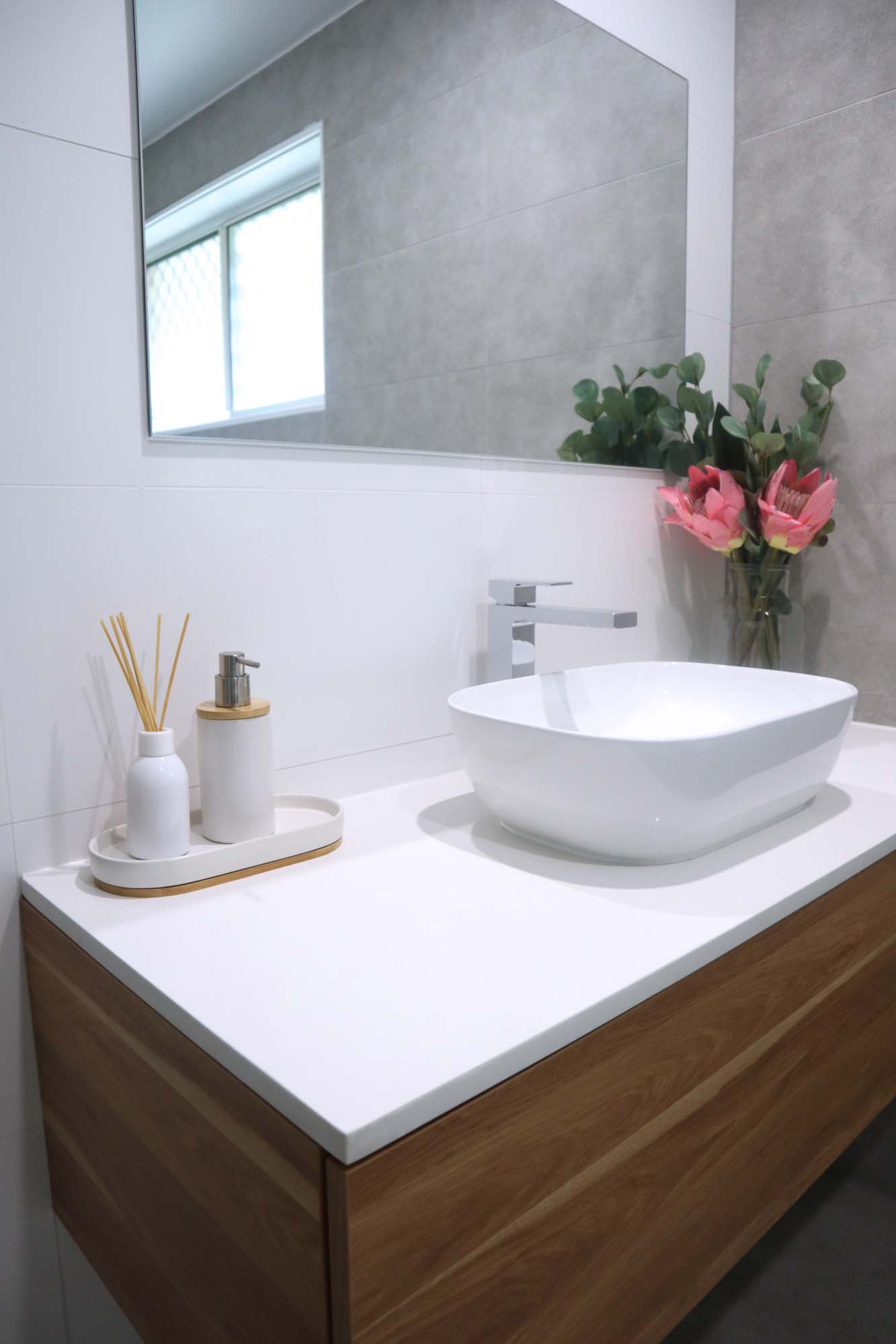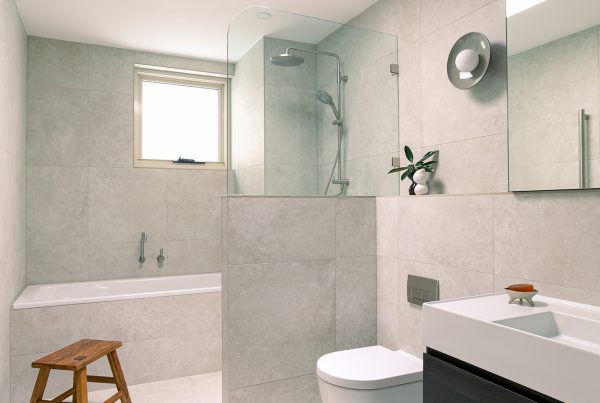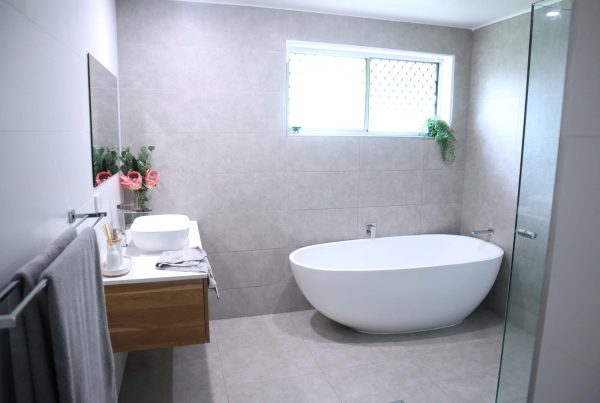Remodelling a small bathroom can be a challenge, especially when you’re working with a limited budget. However, with some creativity and smart planning, you can transform your small bathroom into a stylish and functional space without overspending. Here are some tips for making the most of a small bathroom remodel budget.
Prioritize Your Needs

When remodeling a small bathroom on a budget, it’s crucial to prioritize your needs and focus on the most essential updates. Here’s how to do it effectively:
Assess and Allocate Budget:
Initial Budget Assessment: Begin by determining your total budget for the remodel. Let’s say your budget is $5,000.
Cost Allocation Table:
| Update Category | Percentage of Budget | Approx. Amount (AUD) |
|---|---|---|
| Fixtures | 30% | $2,100 |
| Storage | 25% | $1,750 |
| Lighting | 15% | $1,050 |
| Paint and Tiles | 20% | $1,400 |
| Miscellaneous | 10% | $700 |
Identify Key Changes:
Fixture Updates: Updating fixtures can dramatically change the look and functionality of your bathroom. For instance, a modern, water-efficient toilet can cost around $300, and a stylish sink can be around $200.
Storage Solutions: Maximizing storage space in a small bathroom is vital. Consider wall-mounted cabinets or shelves, which might cost about $200-$400.
Lighting Improvements: Good lighting can make a small bathroom feel bigger and more welcoming. Budget around $100-$200 for new, energy-efficient lighting.
Consider Aesthetic and Functional Enhancements:
Paint and Tile Work: Allocate about 20% of your budget here. High-quality, moisture-resistant paint can cost about $30-$50 per gallon, and tiles can range from $5-$20 per square foot depending on the material.
Miscellaneous: Keep a buffer for unexpected expenses, accessories, or minor tweaks.
Factor in Labor Costs:
Remember, labor can consume a significant portion of the budget. Typically, labor can account for 40-60% of the total project cost. If your total budget is $5,000, expect to allocate around $2,000-$3,000 for labor.
Plan for ROI and Long-Term Savings:
Consider the return on investment (ROI): Bathroom remodels can offer a ROI of approximately 60-70%.
Think long-term: investing in energy-efficient fixtures and materials can lead to savings in utility bills.
Prioritizing your needs when remodeling a small bathroom on a budget is about striking a balance between aesthetic enhancements and functional upgrades. By carefully planning and allocating your budget across different categories, you can ensure that you make the most impactful changes without overspending.
Focus on DIY Projects
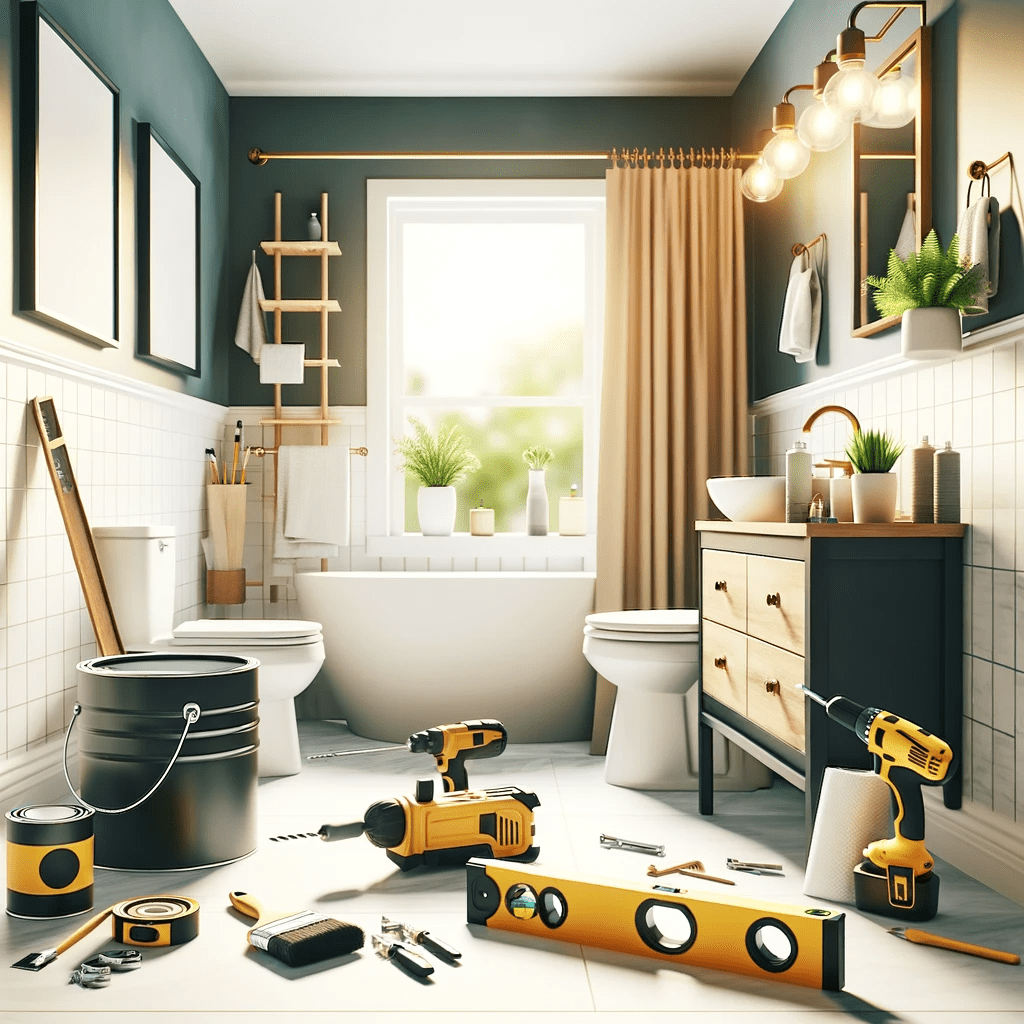
Taking on some DIY projects is a great way to save money on labor costs and make your budget stretch further. Here are some practical ways to approach DIY in your small bathroom remodel:
Plan Your DIY Projects:
Identify What You Can DIY: Assess your skills and comfort level with various tasks. Common DIY projects include painting, hardware replacement, and simple installations.
Set a DIY Budget: Allocate a portion of your total budget for DIY projects. For instance, if your total remodel budget is $3,000, you might set aside $500 for DIY tasks.
DIY Project Ideas and Estimated Costs:
-
Painting the Walls:
Materials Needed: Paint, brushes, rollers, painter’s tape.
Cost Estimate: Approximately $100-$150 depending on the quality of paint and tools.
-
Replacing Cabinet Hardware:
Materials Needed: New knobs or pulls, screwdriver.
Cost Estimate: $2-$5 per piece, with a total of around $50-$100 for an average-sized bathroom.
-
Installing a New Mirror or Shelving:
Materials Needed: Mirror or shelves, mounting tools, level.
Cost Estimate: Mirrors can range from $50-$200, and shelving units can cost between $30-$150.
-
Time Allocation for DIY Projects:
Create a realistic timeline for your DIY projects. For example, painting might take a weekend, while hardware replacement could be done in a day.
Benefits of DIY:
Cost Savings: By doing it yourself, you can save significantly on labor costs, which can be as high as 50% of a project’s total expense.
Personalization: DIY allows you to tailor the project to your exact preferences and needs.
DIY Resources:
Utilize online tutorials, DIY blogs, and home improvement store workshops to guide you through the process.
Safety and Preparation:
Always prioritize safety. Wear appropriate gear and follow safety instructions, especially when handling tools and materials.
Prepare your workspace by ensuring good ventilation, especially while painting, and protecting surfaces from damage.
Focusing on DIY projects in your bathroom remodel is not only cost-effective but also rewarding. By carefully selecting projects that match your skills and preparing adequately, you can enhance your bathroom’s aesthetics and functionality while taking pride in your handiwork.
Shop for Sales and Clearance Items

Finding deals on sales and clearance items is a smart way to reduce costs on fixtures, accessories, and materials for your bathroom remodel. Here’s how to make the most of your shopping strategy:
Develop a Shopping Plan:
List Your Needs: Start by listing everything you need for your remodel, from fixtures to accessories.
Set a Shopping Budget: Allocate a specific portion of your overall budget for purchasing items. For a $5,000 remodel, you might designate $1,500 for shopping.
Where to Find Deals:
Home Improvement Stores: Regularly check for sales, especially during holiday seasons or inventory clearance periods.
Online Retailers: Subscribe to newsletters from sites like Amazon, Wayfair, or Overstock for alerts on sales and clearance events.
Local Salvage Shops: These can be goldmines for unique, discounted items. Visit them periodically to find one-of-a-kind pieces.
Strategies for Shopping Sales:
Compare Prices: Use apps or websites to compare prices across different retailers.
Look for Bundled Deals: Sometimes buying a set of items (like a matching sink and toilet) can be cheaper than purchasing them separately.
Check Return Policies: Ensure that you can return items that don’t fit or suit your remodel.
Timing Your Purchases:
Seasonal Sales: Black Friday, end-of-season, and holiday sales often offer the best discounts.
Off-Peak Shopping: Shop during weekdays or off-hours to get first dibs on new clearance items.
Quality vs. Price:
While it’s important to find good deals, prioritize quality. A cheap item that needs replacing quickly can cost more in the long run.
Leverage Discounts and Coupons:
Look for coupons online, or sign up for loyalty programs at your favorite stores to receive additional discounts.
Consider Refurbished or Open-Box Items:
These items can be significantly cheaper and often come with the same warranties as new items.
Keep Receipts and Records:
Maintaining records of your purchases helps in managing your budget and is useful for future warranty claims or returns.
Shopping for sales and clearance items can significantly cut costs in a bathroom remodel. By planning your shopping strategy, focusing on quality, and keeping an eye out for the best deals, you can make your budget go further without compromising on the quality and style of your bathroom.
Use Affordable Materials

Opting for cost-effective materials is a savvy way to keep your bathroom remodel within budget while still achieving a high-quality look. Here’s a guide to making smart material choices:
Identify Cost-Effective Material Options:
Porcelain Tile: Durable and water-resistant, porcelain is a great alternative to more expensive tiles. Average cost: $3-$10 per square foot.
Vinyl Flooring: Waterproof and easy to install, vinyl flooring comes in a variety of designs, including those that mimic wood or stone. Average cost: $1-$5 per square foot.
Laminate Countertops: These can replicate the appearance of granite or marble at a fraction of the cost. Average cost: $10-$40 per square foot.
Compare Look-Alike Materials:
Research materials that mimic high-end finishes. For instance, certain porcelain tiles can closely resemble marble but at a much lower price point.
Consider Longevity and Maintenance:
While affordability is key, consider the lifespan and maintenance requirements of each material. For example, laminate countertops are less durable than quartz or granite but are much more budget-friendly.
Mix and Match:
Combine affordable materials with a few higher-end accents for a balanced look. For example, use a high-quality faucet with a more economical sink.
Shop Around:
Visit different suppliers to compare prices and styles. Sometimes, local suppliers may have better deals than big-box stores.
Think About Installation Costs:
Some materials, like vinyl flooring, are easier and cheaper to install than others. Factor in installation costs when budgeting.
Durability vs. Cost:
Balance the initial cost with how long the material will last. Sometimes, investing a bit more upfront can save money in the long run.
Sustainability:
Consider eco-friendly options like recycled glass tiles or sustainable wood products, which can be both affordable and environmentally responsible.
Stay Informed About Trends:
Keep an eye on current trends as manufacturers often produce budget-friendly versions of popular high-end designs.
Using affordable materials for your bathroom remodel doesn’t mean sacrificing style or quality. By carefully selecting materials that offer the best balance of cost, appearance, and durability, you can create a beautiful bathroom that stays within your budget.
Optimize Storage Space
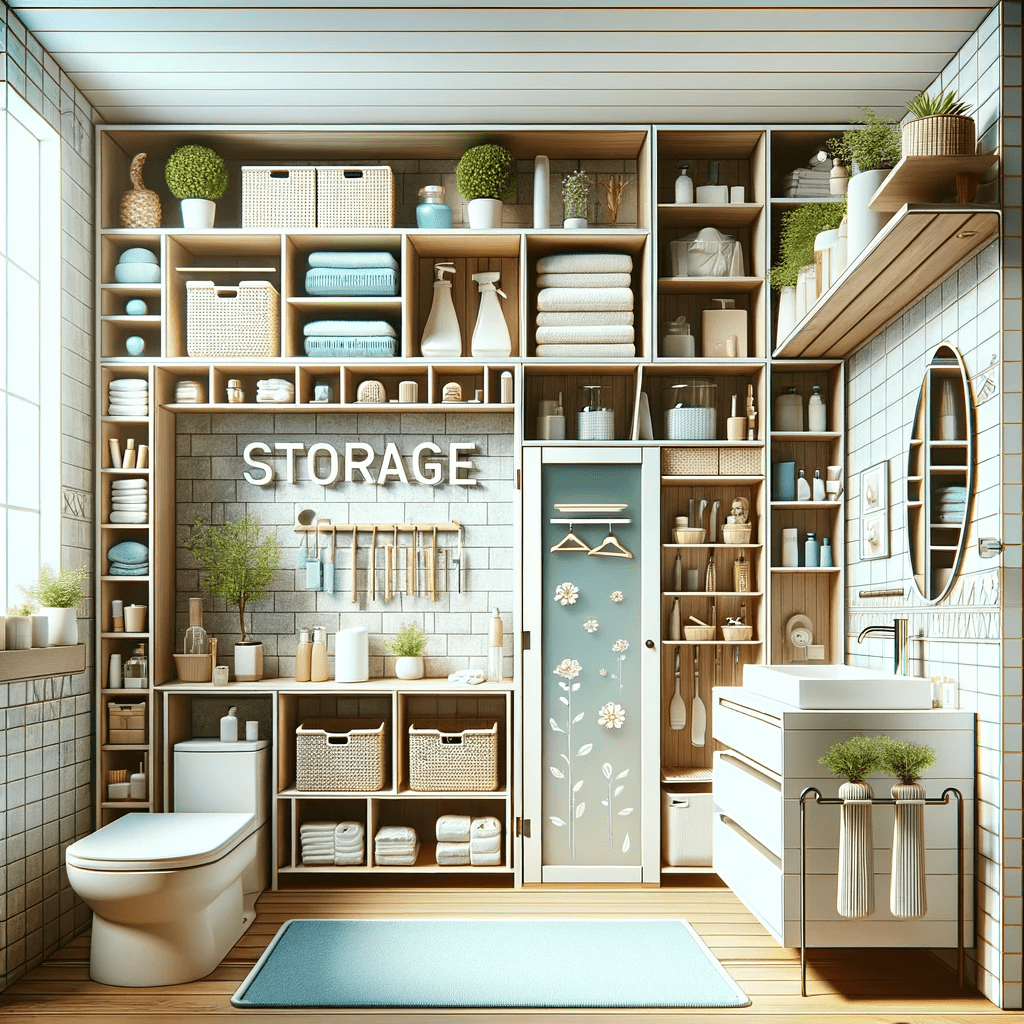
Maximizing storage space is essential in creating a functional, organized, and clutter-free bathroom. Here’s how to find affordable and effective storage solutions:
Assess Your Storage Needs:
Inventory Your Essentials: List out all items that need storage in your bathroom, from toiletries to towels.
Space Evaluation: Consider how much space you have and where additional storage could be incorporated.
Affordable Storage Solutions:
Over-The-Toilet Shelving: Utilize the space above the toilet for additional storage. Average cost: $20-$100.
Wall-Mounted Baskets: Great for holding smaller items, these can be installed on any free wall space. Average cost: $10-$50 per basket.
Floating Shelves: Ideal for storing and displaying items without taking up floor space. Average cost: $15-$75 per shelf.
DIY Storage Options:
Repurpose Items: Transform items like spice racks or file holders into bathroom storage.
Build Your Own: Consider building custom shelves or cabinets if you have the skills. This could be more cost-effective and tailored to your space.
Space-Saving Tips:
Vertical Storage: Utilize wall space to free up floor area, making your bathroom appear larger.
Hidden Storage: Consider built-in cabinets or storage behind mirrors for a sleek look.
Multi-Functional Furniture:
Look for furniture that doubles as storage, like a vanity with drawers or a mirror cabinet.
Organizational Accessories:
Invest in drawer dividers, storage bins, and other organizers to keep things tidy inside cabinets and drawers.
Consider Bathroom Layout:
Ensure any added storage doesn’t impede the bathroom’s functionality. Keep walkways clear and maintain easy access to all fixtures.
Aesthetics and Functionality:
Choose storage options that complement the overall design of your bathroom. Cohesive aesthetics can enhance both the look and usability of the space.
Sustainable and Durable Materials:
Opt for storage solutions made from sustainable and durable materials to ensure longevity and environmental responsibility.
Optimizing storage space in your bathroom is about finding the right balance between functionality and design. By strategically choosing affordable storage solutions and making the most of available space, you can create a well-organized and clutter-free bathroom environment.
Update the Lighting
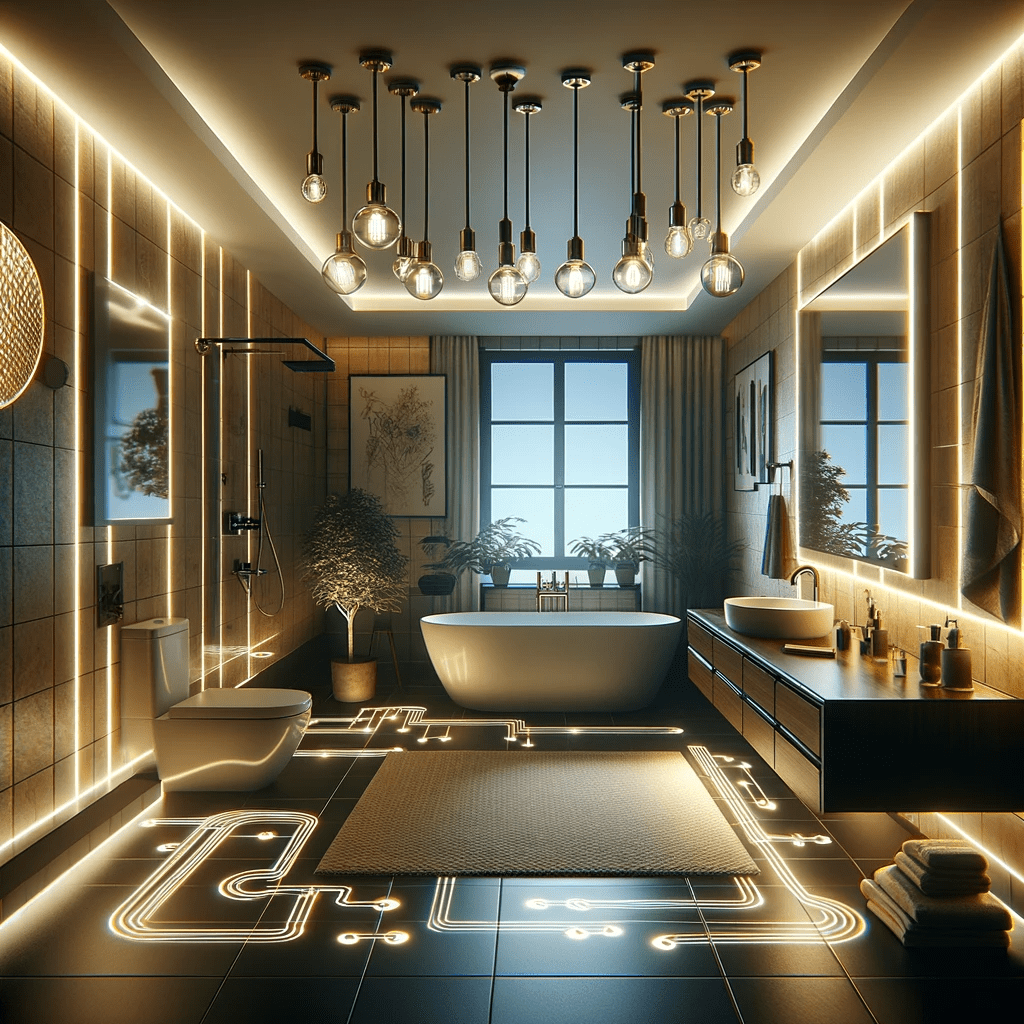
Transforming the lighting in your small bathroom can have a profound impact on its ambiance and functionality. Here’s a guide to achieving the perfect lighting balance:
Assess Current Lighting:
Evaluate Existing Setup: Start by assessing the current lighting. Does it provide enough light? Are there any dark corners or poorly lit areas?
Determine Your Needs: Consider what activities take place in your bathroom, such as makeup application or shaving, to determine your lighting needs.
Layering Your Lighting:
Ambient Lighting: This is the primary source of light in your bathroom, often an overhead fixture. LED ceiling lights are a cost-effective and energy-efficient option.
Task Lighting: Essential for activities like grooming. Install sconces or vanity lights at eye level beside the mirror to reduce shadows.
Accent Lighting: Use to highlight architectural features or décor. Small LED spotlights or strip lights can add a dramatic effect.
Energy Efficiency:
Opt for LED bulbs that consume less energy and have a longer lifespan compared to traditional bulbs.
Lighting Design Tips:
Color Temperature: Choose bulbs with a warm temperature for a cozy feel or cool temperature for a more energizing effect.
Dimmer Switches: Installing dimmers allows you to adjust the light intensity, setting the right mood for different times of the day.
Consider Natural Light:
Maximize any natural light available. Sheer window treatments can help diffuse natural light effectively.
Safety and Installation:
- Ensure all fixtures are suitable for bathroom use and moisture-resistant.
- If you’re not experienced with electrical work, hiring a professional for installation is recommended.
Budgeting for Lighting:
Allocate a portion of your remodel budget for lighting. On average, expect to spend $100-$300 for quality fixtures and installation per light source.
Shopping for Fixtures:
Visit home improvement stores or browse online for a wide selection of styles and prices. Keep an eye out for sales or discounts.
Integrating with Decor:
Choose lighting fixtures that complement the overall design and color scheme of your bathroom.
Innovative Options:
Consider modern options like motion-sensor lights for convenience or illuminated mirrors for added functionality.
Updating the lighting in your small bathroom is not just about making the space brighter; it’s about creating a more inviting and functional environment. By thoughtfully layering different types of lighting and considering energy efficiency, you can significantly enhance both the appearance and usability of your bathroom.
Choose a Focal Point
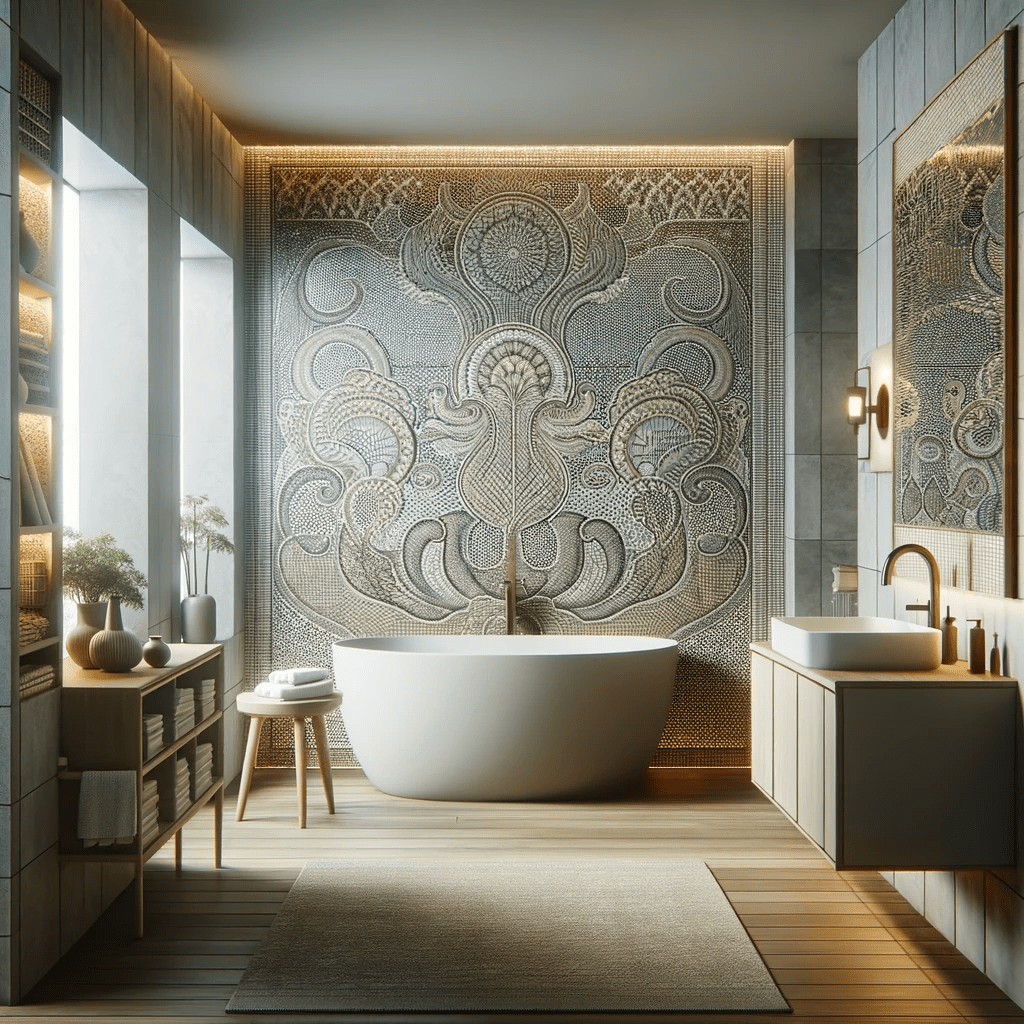
Creating a focal point in your small bathroom can draw attention away from its size and add visual interest to the space. Consider adding a bold accent wall with wallpaper or a unique tile pattern, or installing a statement fixture such as a chandelier or pendant light.
Add Plants

Adding plants to your small bathroom can create a natural and calming atmosphere while also improving indoor air quality. Look for low-maintenance plants such as snake plants, spider plants, or peace lilies to add color and life to your space.
Opt for a Shower Curtain
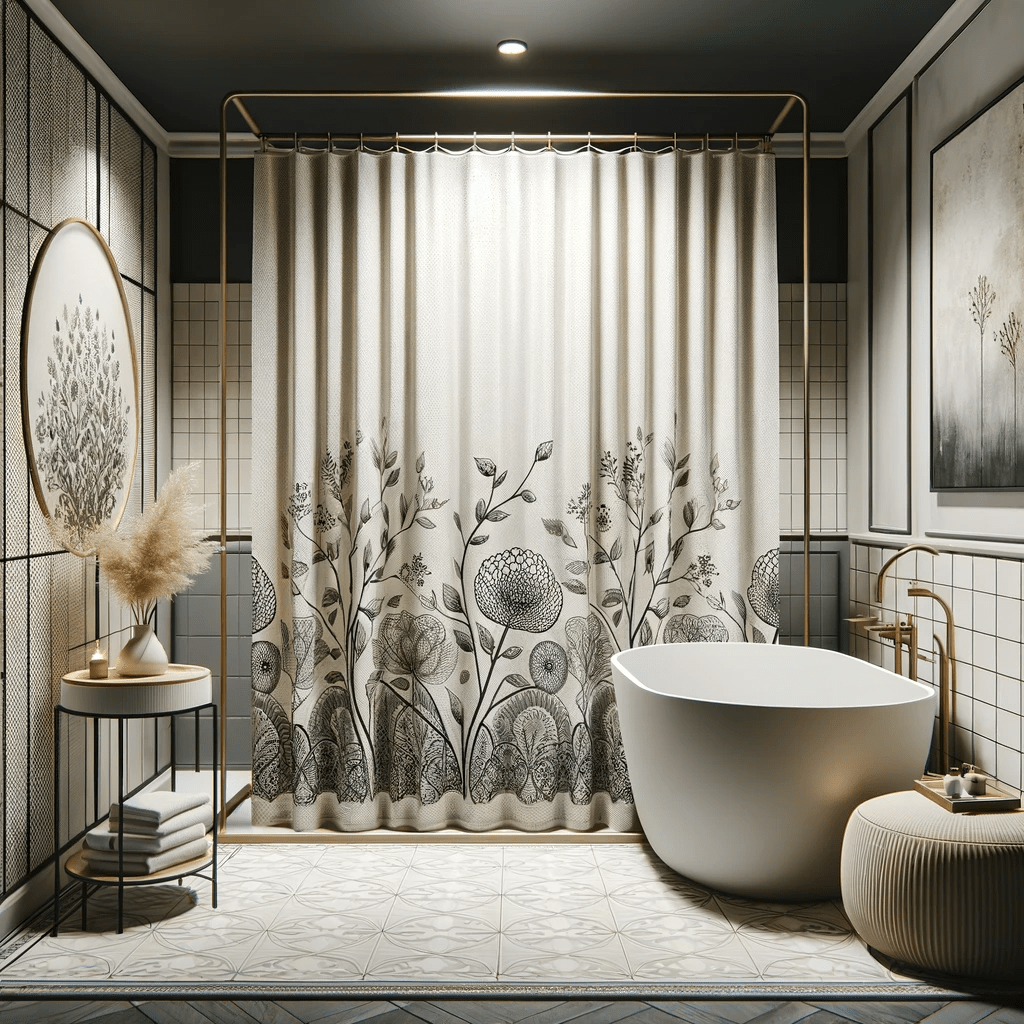
Replacing a glass shower door with a shower curtain can be an affordable way to update your small bathroom while also adding texture and visual interest. Look for shower curtains with a bold pattern or color to create a focal point in your bathroom.
Keep it Simple
When remodeling a small bathroom on a budget, it’s important to keep the design simple and streamlined. Avoid clutter and unnecessary decorative items, and focus on creating a cohesive and functional space that maximizes the available square footage.
By incorporating these tips and strategies, you can make the most of a small bathroom remodel budget and create a stylish and functional space without overspending. Remember to prioritize your needs, focus on affordable materials and DIY projects, and work with a bathroom contractor who has experience working with small spaces.
Related Articles
-
Using Sustainable Materials to Save Money on Your Bathroom Remodel.
-
Ways to Negotiate with Contractors to Stay Within Your Budget for Bathroom Remodeling.
-
DIY vs. Hiring a Professional: Which Option is More Budget-Friendly for Bathroom Remodeling?
-
Financing Your Bathroom Remodel: The Pros and Cons
-
Cost Breakdown: Understanding the Expenses Involved in a Bathroom Renovation
-
How to Prioritize Your Spending During a Bathroom Remodel
-
How To Set a Realistic Budget For Your Bathroom Remodel
-
How Can I Modernize My Bathroom Cheaply?
-
How Can I Make My Bathroom Look Expensive?
-
How Much Does it Cost to Renovate a Bathroom?
-
How to Reduce Your Costs When Remodeling Your Bathroom
-
How Much Does It Cost to Replace the Bathroom?
-
How to Make the Most of a Small Bathroom Remodel Budget

